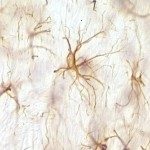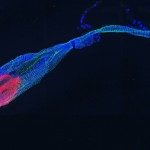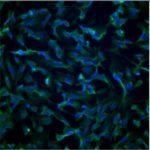Lien vers Pubmed [PMID] – 28657418
Lien DOI – 10.1080/19420862.2017.1342914
MAbs 2017 ; 9(6): 1016-1027
Today, molecular imaging of neurodegenerative diseases is mainly based on small molecule probes. Alternatively, antibodies are versatile tools that may be developed as new imaging agents. Indeed, they can be readily obtained to specifically target any antigen of interest and their scaffold can be functionalized. One of the critical issues involved in translating antibody-based probes to the clinic is the design and synthesis of perfectly-defined conjugates. Camelid single-domain antibody-fragments (VHHs) are very small and stable antibodies that are able to diffuse in tissues and potentially cross the blood brain barrier (BBB). Here, we selected a VHH (R3VQ) specifically targeting one of the main lesions of Alzheimer’s disease (AD), namely the amyloid-beta (Aß) deposits. It was used as a scaffold for the design of imaging probes for magnetic resonance imaging (MRI) and labeled with the contrastophore gadolinium using either a random or site-specific approach. In contrast to the random strategy, the site-specific conjugation to a single reduced cysteine in the C-terminal part of the R3VQ generates a well-defined bioconjugate in a high yield process. This new imaging probe is able to cross the BBB and label Aß deposits after intravenous injection. Also, it displays improved r1 and r2 relaxivities, up to 30 times higher than a widely used clinical contrast agent, and it allows MRI detection of amyloid deposits in post mortem brain tissue of a mouse model of AD. The ability to produce chemically-defined VHH conjugates that cross the BBB opens the way for future development of tailored imaging probes targeting intracerebral antigens.






